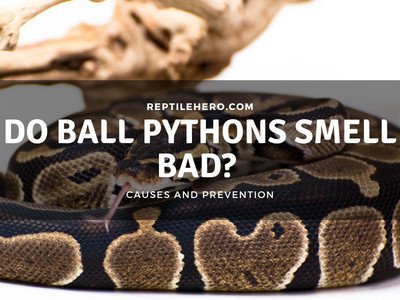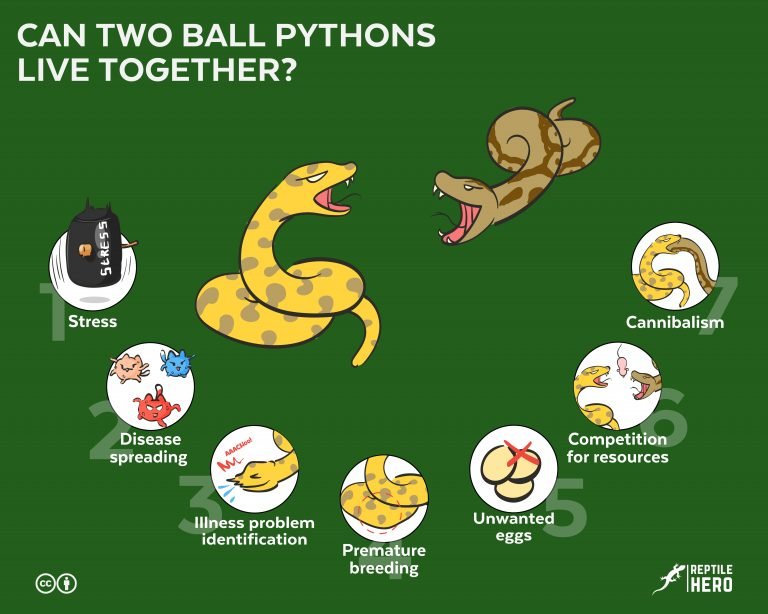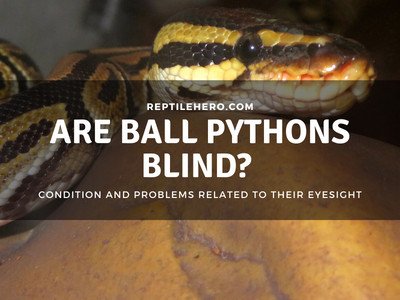Can Ball Pythons Eat Hamsters? (Is it a Good Alternative?)
Ball pythons, in general, have a diet of mostly rodents which is an order of animals that includes hamsters. Are you out of mice and rats and the pet shop only sells hamsters? Can a ball python eat one, or is it dangerous?
In most cases, ball pythons can eat hamsters when no other rodent feeder is available. Hamsters are fatty alternatives to common staple feeders. However, they are not recommended due to their accessibility, cost, temperament, content, and fur.
Hamsters are a part of the rodent family Cricetidae. They are similar to rats and mice, but can they be an alternative feeder? What is their difference as feeders and why is it uncommon to feed them to ball pythons? Read until the end to find the shocking truth.
2 Advantages of Feeding Hamsters to Ball Pythons
Although uncommon, hamsters can sometimes be fed to ball pythons by keepers and breeders. In terms of feeding hamsters, there are a few advantages: 1) appeal and 2) size.
1. Appeal
If a ball python refuses to eat due to the type of prey, feeding it hamsters can sometimes be the solution. Hamsters also seem appetizing to some ball pythons when offered.
Based on anecdotal evidence, many keepers noticed that ball pythons like eating hamsters. This is concluded because their snakes will eat after a fast when offered a hamster.
Keepers who have fed a hamster to their ball python, either have no way to buy alternatives or have picky ball pythons that would not eat mice or rats.
So if your ball python refused mice, rats, and African soft furs, you can try feeding a properly sized Syrian hamster as a last resort.
2. Size
Hamsters, specifically Syrian species, are properly sized feeders for ball pythons ranging from hatchling to adult.
| Syrian Hamster Age (Weeks) | Weight Range (Grams) |
| 3 | 30–65 |
| 5 | 50–100 |
| 7 | 83–140 |
| 9 | 110–170 |
| 11 | 120–200 |
| 13 | 130–210 |
| 15 | 135–225 |
When considering the recommended 10-15% feeder-snake weight ratio, Syrian hamsters have an optimal weight range to accommodate ball pythons of different weights [1].
5 Reasons Why Hamsters are not Recommended as Feeders for Ball Pythons
There are 5 reasons why hamsters are not typically fed to ball pythons, namely: 1) inaccessibility, 2) expensive, 3) potential harm, 4) nutritional value, and 5) indigestible fur.
1. Inaccessibility
Compared to mice and rats, hamsters are more uncommon feeders in both a live and frozen state. Most of the time pet shops sell hamsters as pets and have fewer stocks.
In certain places, hamsters are harder to get, this will be a problem if a ball python gets imprinted on eating only hamsters.
Food imprinting in ball pythons is a rare case which means that they will only take certain types of feeders and will have a hard time accepting other alternatives [2].
Imagine if your ball python will only eat hamsters, what if there are no stocks of either live or frozen ones that are accessible to you? This scenario will cause problems in which a ball python will be forced to starve in order to accept other types of feeders.
2. Expensive Cost
Hamsters are relatively expensive when used as ball python feeders. Live ones can cost 10–20 dollars each while frozen ones cost twice more than rats and mice of the same size.
Hamsters are as prolific breeders as mice and rats. However, they are housed differently due to being territorial, thus requiring more space from a pet store or breeder. This leads to an increase in their price.
This is one of the reasons why very few feeder breeders have large stocks of hamsters. Hamsters tend to fight and kill each other when housed together in one enclosure, especially the Syrian and Chinese species.
3. Potential Harm
Hamsters are often aggressive and can retaliate by scratching and utilizing their sharp teeth. When attempting to feed hamsters to ball pythons, it is recommended to feed it either pre-killed or frozen-thawed.
Even dwarf hamsters the size of mice are equipped with long incisors and can exhibit defensive behavior.
Fun Fact: Unlike mice and rats, hamsters are mostly solitary and territorial creatures that even attack those of the opposite gender during mating.
4. Nutritional Value
Ball pythons have a higher chance of becoming overweight or obese when fed a staple diet of hamsters. The excessive amount of fat can be detrimental to a ball python’s health in the long run.
In terms of nutritional value, hamsters offer more fat compared to staple feeders like rats and mice. A hamster’s nutritional value is comparable to that of a rat’s due to their close similarities in terms of size in the juvenile stage.
Here is a comparison table between a hamster and a rat of the same age in nutritional value.
| Content | Juvenile Hamster | Juvenile Rat |
| Dry Matter % | 30.3 | 30 |
| Crude Protein % | 49.8 | 56.1 |
| Crude Fat % | 34.7 | 27.5 |
| Gross Energy (kcal/g) | 5.98 | 5.55 |
As observed from the table above, hamsters are quite similar to rats in terms of nutritional content with a few noticeable differences. To be more specific, hamsters are fattier and have less protein in comparison to rats [3].
The excess fat build-up is harmful to ball pythons which can lead to organ failures, specifically the liver. These risks increase in a fatty diet, sedentary behavior, and improper temperature levels.
>>Learn more about obesity in our article about overfeeding ball pythons
5. Indigestible Fur
On average, hamsters have thicker and longer fur compared to mice and rats. In relation to this, ball pythons, like most snakes, cannot digest keratin which is mostly found in hair and feathers.
Although there are no studies that prove hairy prey can harm a ball python’s digestive system, there are speculations that it can be harder to digest hamsters due to their thick fur.
Some keepers who have experienced feeding hamsters share that their snakes released wastes that look like a clump of fur. Furballs are sometimes separated from the main feces due to their large amount.
Although these are a few stories, they can be considered a bit of anecdotal evidence that may be related to hairy feeders such as hamsters not being digested properly.
4 Factors to Consider Before Feeding Hamsters to Ball Pythons
Before feeding hamsters to a ball python, there are 4 things to keep in mind: 1) size, 2) frequency, 3) species, and 4) state.
1. Size
As a general rule, the 10–15% feeder-snake weight ratio is applicable even in using hamsters as ball python feeders.
| Ball Python Weight (Grams) | Feeder Size (Grams) |
| 50-100 | Hamster pups (10–15) |
| 200-300 | Weaned hamster (20–40) |
| 300-500 | Juvenile hamster (50–65) |
| 600-1000 | Small adult hamster (70–100) |
| 1100-1400 | Medium adult hamster (100–140) |
| 1500 and above | Large adult hamster (150–180) |
The hamster weight guide indicated above is not for a staple diet intake, as it is not recommended to feed such high-fat feeders too often to ball pythons.
Ideally, you should only offer your ball pythons hamsters as occasional treats. Using it while training pythons, for instance, can serve as positive reinforcement.
2. Frequency
It is not recommended to utilize hamsters as a staple diet for ball pythons. An occasional feeding of once or twice a month can be done when feeding hamsters to ball pythons.
If a ball python is a problem eater, trying to entice it with an alternative feeder like a hamster can sometimes do the trick to let the snake eat again.
Feeding your ball python too frequently can lead to potential health issues like impaction and fatty liver which are both fatal.
Impaction happens due to a large build-up of fecal matter in the cloaca which prevents bowel movement. On the other hand, fatty liver is the accumulation of fat in close proximity to the liver which shortens the lifespan of a ball python.
Both complications mentioned above need immediate medical treatment.
3. Species
There are 3 species of hamsters: 1) Syrian, 2) Dwarf and 3) Chinese. Each of these has different sizes and temperaments. The best ball python feeder among them is the Syrian hamster.
1. Syrian
Syrian hamsters are the largest breed of hamsters in the world. With adult sizes ranging from 5–7 inches in length and weighing 100–200 grams.
For ball python feeders, Syrians are the best hamster breed due to their size.
2. Chinese
Chinese hamsters are moderately sized ranging at 3–4 inches in length. They have unique long tails for a hamster and are often timid in behavior.
As ball python feeders, they are comparable to the size of a medium-sized mouse.
3. Dwarf
In the dwarf strand, there are 3 common kinds (from smallest to biggest): Roborovski, Winter white, and Campbell’s. The size range of these breeds is about 2–4 inches in max length.
They can also be used as a ball python feeder but their size may be inadequate for larger ball pythons. They are comparable to small-medium-sized mice.
4. State
When feeding hamsters to ball pythons, it is highly recommended to refrain from offering them as live prey. Hamsters that are pre-killed or frozen-thawed are the best for ball pythons to reduce potential feeder-induced injuries.
Live hamsters, even dwarf breeds, can cause serious injury through their sharp teeth. Bigger ones like Syrian hamsters can also become very aggressive and defensive.
Pro Tip: For pre-killing hamsters, CO2 poisoning is the most recommended.
Can You Breed Hamsters as a Ball Python’s Food?
Breeding hamsters solely as feeders is inefficient when compared to other feeders. This is mainly due to a hamster’s solitary nature, which means that they don’t cohabit well with other hamsters.
In housing hamsters, those that are 2 months old and older need to be placed in separate containers regardless of whether they are a pair or not.
This results in higher equipment costs and allotted space.
How Can You Breed Syrian Hamsters?
When pairing hamsters, specifically Syrian breeds, females should be the ones placed inside a male enclosure. As a novice breeder, it is recommended to supervise the pair to prevent them from injuring and killing each other.
After successfully mating, Syrian hamsters have a gestation period of around 15–20 days. They give birth to a litter size of 8–12, although this estimate can be lower or higher.
Warning: After the female hamster gave birth, do not disturb her, except for water and food refills, for at least 7 days. Stressed hamsters can kill and possibly cannibalize their babies.
After a month with the mother, weaned hamsters should then be separated into another enclosure.
They can be kept together until they reach 2 months old. After this time, they should each have their own enclosure.
3 Alternatives to Hamsters as Ball Python Feeders
Hamsters are not the best feeder for a ball python. Ball python owners can opt to offer 3 other better alternatives like: 1) rats, 2) mice, and 3) African soft furs.

1. Rats
Rats are one of the most recommended staple feeders for ball pythons. Their size, availability, and nutritional value are great for hatchling-adult ball pythons.
While following the correct feeder size, you can feed your ball python one appropriately sized rat every meal instead of multiple smaller feeders.
Although they are arguably the best feeders, medium and large rats can also be a threat to ball pythons. For large ball pythons, frozen-thawed or pre-killed are the options in using big rats as feeders.
2. Mice
Another recommended ball python feeder, mice are similar in nutritional value and availability to rats. However, they differ in size. Mice are great for hatchling and yearling ball pythons.
Mice are smaller than rats which means that you must feed multiple mice per feeding to reach the recommended prey intake of bigger ball pythons.
>>Learn more about mice and rats as staple ball python feeders in our article can ball pythons eat rats and mice?
In my own experience, mice can be a staple diet of a ball python until adulthood.
My male ball python, Choco, has been on a mice diet since I got him 5 years ago. I feed him 2 live mice every 2 weeks and he has been maintaining a good body condition.
3. African Soft Furs
African soft furs or ASFs closely resemble a common rat but are slightly smaller in size. They are similar in nutritional values but ASFs are harder to find in most locations compared to mice and rats.
ASFs are also more expensive depending on the supply available in your location. So one of the other disadvantages in giving this type of feeder to your ball python is the risk of supply shortage.
This will be a problem when your ball python becomes addicted and will only eat this kind of feeder. It will be hard to coax your snake to eat other options like mice and rats.
Further Questions
Can ball pythons eat baby hamsters and dwarf breeds?
Hatchling ball pythons can be fed baby hamsters, although this size is not enough nourishment for them. Juvenile ball pythons can also take down dwarf hamsters but should be given as pre-killed or frozen-thawed to avoid possible injuries to the snake.
Are hamsters or gerbils better for ball python?
Hamsters are better than gerbils as ball python feeders. This is due to the Syrian breed having an optimal size and being more available compared to the latter. Also, adult gerbils only weigh 50-60 grams while adult Syrian hamsters can weigh 150-200 grams.
Summary of Feeding Hamsters to Ball Pythons
Ball pythons can eat hamsters because they are appetizing and a certain breed is an optimal size for feeders. However, It is not recommended to be offered as a staple feeder due to being uncommon, expensive, potentially dangerous, fattier, and having thicker fur.
Before feeding hamsters to ball pythons, it is important to consider the appropriate size, frequency, species, and the state of the feeder itself.
In general, breeding hamsters as feeders can be inefficient due to higher enclosure costs, and space requirements. However, there are 3 great alternatives to hamsters: rats, mice, and African soft furs.
Resources
[1] https://www.criver.com/products-services/find-model/lvg-golden-syrian-hamster?region=3616
[2] https://citeseerx.ist.psu.edu/viewdoc/download?doi=10.1.1.573.7994&rep=rep1&type=pdf







